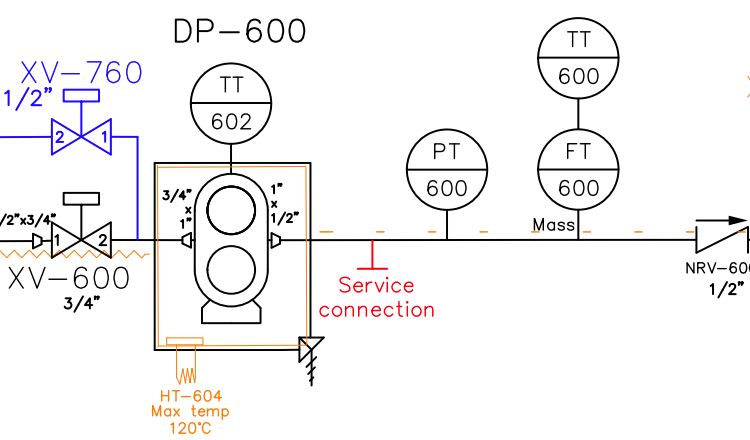Hello All,
We are dealing with a phenomenon of a very rapid drop in pump performance shortly after the system is activated.
To go deep into the details:
We have a tank with an agitator inside, there is a liquid inside(a mixture of water and oil) with level control. there is an outlet pipe going to a gear pump (Liquiflo gear pump), a pressure transmitter, and a mass flow to control the flow coming from the pump with a servo motor.
The flow going into the customer production line with a backpressure of 10 to 11 bar fluctuates the backpressure in this range.
NPSHa is higher than the required.
In some factories we can see that the pump has not reached the SP flow after 3-4 months; in other factories, it can happen after a few weeks. If we try to run the pump to an open tank (without the backpressure of the line) and in the same flow it works just fine.
I am starting to think that maybe gear pumps need to work 24/7 against high pressure is not ideal, and maybe another type of pump is the solution.
I will be happy to hear your thoughts.
Thanks
Liad
We are dealing with a phenomenon of a very rapid drop in pump performance shortly after the system is activated.
To go deep into the details:
We have a tank with an agitator inside, there is a liquid inside(a mixture of water and oil) with level control. there is an outlet pipe going to a gear pump (Liquiflo gear pump), a pressure transmitter, and a mass flow to control the flow coming from the pump with a servo motor.
The flow going into the customer production line with a backpressure of 10 to 11 bar fluctuates the backpressure in this range.
NPSHa is higher than the required.
In some factories we can see that the pump has not reached the SP flow after 3-4 months; in other factories, it can happen after a few weeks. If we try to run the pump to an open tank (without the backpressure of the line) and in the same flow it works just fine.
I am starting to think that maybe gear pumps need to work 24/7 against high pressure is not ideal, and maybe another type of pump is the solution.
I will be happy to hear your thoughts.
Thanks
Liad

